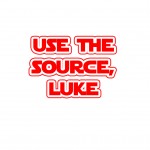SEO Basics – what every client needs to know (and a bunch of stuff they probably don’t…)
The world of Search Engine Optimisation (SEO) is inhabited by shady shysters and good-intentioned geeks alike. The problem for most people is separating the well intentioned from the wilfully misleading. The whole field of SEO is almost designed to be intimidating: From the ubiquitous buzzwords (Link Juice, Long Tail, Deep Linking, SERPs etc.) to the mechanics of optimising your site (“just change the meta description”, “add a nofollow tag”, “your underlying code has no h1” etc ). It doesn’t have to be this way, though: Generally speaking, as long as your site has been built fairly well Google will find your content and index it accordingly. In this article I am going to debunk some of the myths that surround SEO and give you the tools that you need to plan your world domination.
Rule 1 – delete all unsolicited emails
What’s in it for them? They want you to pay for work to your site. They are not trying to do you a favour.
How do they know my site is in bad shape? They don’t. Their email will say they have looked at your site and it needs SEO work, but the truth is invariably they will have gleaned your email address from a list they have bought along with thousands of others. A proper SEO report will take hours if not days to produce and companies will only do this for free for large companies hoping that they will recoup the cost on ongoing work.
What guarantees do they give of quality work? If they’re shysters they will give a guarantee. Truth is that no-one can give a guarantee of a #1 slot. However, if they are honest they won’t promise to do anything much at all. What other industry do we pay people for a service that we are uncertain of the outcome or even of how much work we are getting for our money?
How do you know your site won’t be harmed by the work they do? Some practices are frowned upon by Google, which can result in a rankings drop or worse. The most high profile case was when Google banned the BMW site from its listings in 2006. Other misdemeanours can result in a drop in rankings such as keyword stuffing (too many non-relevant keywords on your page), paying for inbound links, selling outbound links without telling Google and having autogenerated link pages (the kind that say ‘Carpet cleaner in Berkshire, carpet cleansing in Swindon, Swindon rug cleaners..’).
Rule 2 – be wary of all claims made in reports
I was once in a meeting with a very big client, for whom we were their main agency. At the table were the client and two SEO agencies who were both vying for SEO work. One was offering to do it for free as part of a larger package of work, the other wanted to charge $1,500 per month. The latter company had produced a visually stunning report and had flown their VP over for the meeting. Whilst the report contained a few nuggets of truth, there were some outrageous fallacies therein. The biggest was regarding trailing slashes at the end of URLs.
 You may often see URLs on the web that are written with a lot of slashes in them, such as http://www.guardian.co.uk/technology/blog/2010/jan/25/seo-advice-for-billgates Now Google likes these, as it can work out from the slashes what this page is probably all about before it gets there – it’s probably a technology article, probably a blog, probably posted in January 2010 and it pertains to SEO advice. Now a long time ago, these would have been actual directories, just as you have folders on your PC or Mac and visit C:\Windows\Desktop\ or file:///Users/admin/Desktop/ but these days developers tend to use a rewrite engine to make these paths. The file doesn’t exist at that location, but the server is told that if someone asks for that file, go and find it somewhere else.
You may often see URLs on the web that are written with a lot of slashes in them, such as http://www.guardian.co.uk/technology/blog/2010/jan/25/seo-advice-for-billgates Now Google likes these, as it can work out from the slashes what this page is probably all about before it gets there – it’s probably a technology article, probably a blog, probably posted in January 2010 and it pertains to SEO advice. Now a long time ago, these would have been actual directories, just as you have folders on your PC or Mac and visit C:\Windows\Desktop\ or file:///Users/admin/Desktop/ but these days developers tend to use a rewrite engine to make these paths. The file doesn’t exist at that location, but the server is told that if someone asks for that file, go and find it somewhere else.
Now the VP of this vast company pulled up a section of the report which said that the site we had built had critical security flaws in it. We (apparently) weren’t adding a closing slash to our URLs, i.e news/foreign-news/story-title-here, which hackers could use to their advantage. Pretty strong stuff, but complete nonsense, as the directories didn’t exist. And as rewrite engines are so prevalent in the web industry, I had to ask myself whether they were being wilfully ignorant (pretending that they didn’t know that these URLs were using a rewrite engine) to frighten the client, or whether they genuinely had no idea that web addresses could be made this way. Either option was shocking.
My point is that if a huge company with hundreds of employees is willing to drag their VP into a bun fight about non-existent security issues, what about that report that you have sitting in front of you? What can you trust within it? Hopefully by the end of the article, you will be in a position to separate the wheat from the chaff, but if you don’t make it to the end then get a second and third opinion from a professional company you trust.
Rule 3 – Content is king
 One of the rules that has always prevailed in site building is that people will only visit your site if the content is better than the opposition. People will link to your site if there’s great content and they will visit often if there’s lots of it, updated regularly.
One of the rules that has always prevailed in site building is that people will only visit your site if the content is better than the opposition. People will link to your site if there’s great content and they will visit often if there’s lots of it, updated regularly.
The same is true with SEO – if your site has lots of great content Google will index it and rank it highly even if it was coded poorly. Obviously in competitive markets, such as ‘Insurance’ there is no real content as such and I will deal with this in another post, but for the purposes of this article let’s assume your site is centred around Sprocket from Fraggle Rock. You write articles about Sprocket and make plush toys under licence from The Jim Henson Company and wish to sell it. You want your Sprocket site to blow the Sprocket from Fraggle Rock Appreciation Society out of the water.
Assuming you have a site already and it’s CMS driven, the cheapest and most effective thing you can do right now is write a load of fantastic copy. Get some images and videos (checking copyright issues, naturally) and make your site the go-to resource for people who want to know about Sprocket. Add in some UGC for people to reminisce about the show and you’re away. It won’t be instant, but people will start to read your articles and will start linking. Meanwhile Google will start caching and indexing your pages and pretty soon you will near the top of the Search Engine Results Pages (SERPs). If you have done this bit extremely well, or if you haven’t much competition on the WWW for your chosen topic, then you will need do no more. You are at number 1.
The lesson from rule #3 is that Google won’t for the most part index you for content or keywords that do not appear on your site. In the words of one Google employee “Users type words to find your site. Make sure those words are in your site”
Rule 4 – use the source, Luke
 So, you’ve got a great site and people are flocking to it. Sales of the Sprocket toy are soaring, but you’re still not at number one and it’s bugging you. Now you’re going to get your hands mucky and look at the inner workings of your website, or at least the bit that Google gets a butcher’s at.
So, you’ve got a great site and people are flocking to it. Sales of the Sprocket toy are soaring, but you’re still not at number one and it’s bugging you. Now you’re going to get your hands mucky and look at the inner workings of your website, or at least the bit that Google gets a butcher’s at.
First off, let’s load up the homepage of your site and let’s lift the hood. Right click an area of the site and choose “View Source Code” from the menu. You should get a lot of text starting with something that begins with <html> or <!DOCTYPE ..
This is the source code of your page and it’s what developers write, what your browser uses to draw your page, and what Google uses to determine what your site is all about. The things that we’re going to be looking at are evidence of header tags, the meta tags, and title tags, as these are the most important things in your code.
Let’s start at the top. There should be a bunch of text in the <title> bit. This is what users see at the top of their browser window. It is also normally the title of the listing in the SERPs, and it is one of the most important factors in Google’s famous algorithm. SEOMoz cover the title tag in more depth here. The title tag should explain in less than 70 characters what that page is all about. One of the most common mistakes developers make is to give each page the same title – i.e. The Sprocket Site. What you want is a variation for each page – i.e. Sprocket’s relationship with Gobo | The Sprocket Site.
Next up, let’s find the meta description tag. This is the one that starts with <meta name=”description”… Now a long time ago the meta description and a similar tag called meta keywords used to be considered near the top of the tree in Google’s algorithm. It showed up a few SEO experts when it was revealed that meta title hadn’t been used for years and that the meta description didn’t really count for a whole hill of beans. These days, your meta description is useful in as far as it may be used by Google as the description of your page in the SERPs, which Google refer to as snippets. I say may, as Google tries to give the most relevant snippet it can and if that means it doesn’t use your meta description, that’s probably because it’s not as relevant to the end user as some content further down the page. So the meta description can be important if you write it well – it will be the first thing that a user sees of your site before they click on the link.
Finally, we have header tags. These are tags that start <h1 or <h2, <h3 etc. with decreasing importance. For a history of why these tags are important and what they mean, please see my blog post on the history of search engines. For now, it is only important that you know that there should only be one <h1 tag on the page and that it should describe as best as possible the content therein. A good h1 tag would be Sprocket’s relationship with Gobo.
The most important thing about this trio is that they should correlate. If the h1, meta description and title all contain similar keywords, or keywords variations we’re onto a winner.
Rule 5 – Concentrate your resources where they are best spent
 There’s a buzzword phrase that refers to quick, easy wins as “low hanging fruit”. This is where you should target your resources. Don’t bother getting your stepladder out to get the juicy apples at the top of the tree, when you can quickly dart around the bottom collecting a whole basket of goodies.
There’s a buzzword phrase that refers to quick, easy wins as “low hanging fruit”. This is where you should target your resources. Don’t bother getting your stepladder out to get the juicy apples at the top of the tree, when you can quickly dart around the bottom collecting a whole basket of goodies.
What this means in practice is that if you don’t have time to make a great site with rich content, but have a developer on hand who can make some fundamental changes, do this instead. If you find you are #3 for one keyword, and #18 for another, the chances are that the jump from #18 to #5 or #6 will not be as hard as from #3->#1. See if you can make small changes to great effect.
Rule 6 – to localise is to take first prize
 In April 2011, Google rolled out the latest version of its famous algorithm with the nickname of Panda.
In April 2011, Google rolled out the latest version of its famous algorithm with the nickname of Panda.
The Panda algorithm was equipped to work out the quality of a given web page, that is to say whether it is well written, whether it has plagiarised content from elsewhere on the web, whether its content is thin rather than broad and all-encompassing and so on. Panda is essentially better for users of Google: They get better search results that are more accurate. Take for example the search whats that movie that goes backwards and has a guy who can’t remember stuff.
Google is getting better at working out what results we want to see by using factors such as high bounce rate (people clicking a link and instantly realising it was wrong), low volume of clicks from SERPs, where people click after doing a search (hence why sometimes Google shopping or Google Images appear within Google organic listings) and where you are located. It’s the last point I want to touch on now, as it can provide huge gains relative to effort.
If you type a city name, or area name along with your keyword, you will have noticed that you often get a google maps display on top of the organic listings. For example, take the SERP for “reading dentist” we have 3 paid for ads, followed by ten google maps results, followed by the organic listings. The dentists who invested in the SEO work to get them at #1 in the listings with my company are now almost off the SERPs, even though they are #1 for “reading dentist” in the organic listings.
So what can they do about it, and how can you gain from localising your site?
The first thing I would recommend is to get yourself on Google Places. Register your business at its address and Google will send you a postcard with a verification code on it. Secondly, in the same way as Google see more links to your site as a sign of trust, the more mentions there are of your name and address in the same context, the more comfortable they feel to second guess your address, so get people to mention it in their blogs if they can.
Rule 7 – Be realistic
 Of course you want your site to blow the world away, but when you think about it, why should Google rate your site higher than any other in the world for any given search term? Think about it for a second.
Of course you want your site to blow the world away, but when you think about it, why should Google rate your site higher than any other in the world for any given search term? Think about it for a second.
Your site would have to be pretty special if it were number one for ‘pyjamas‘,’jam‘ or ‘dentist‘, right? Google has a duty to its users to give them the best possible results for their search query. Sometimes this is easy, as you know that someone typing “eagerterrier’s blog” is searching for just one thing, but what if they search for ‘pyjamas‘? Google reasonably thinks that you are searching to buy pyjamas and the only wikipedia entry is one on piece of software called pyjamas (although, to further add complexity, this may only appear in my results because Google knows I am a developer). Compare this result to a search for “the magna carta“: Here Google knows you don’t want to buy a magna carta, but wish to research the magna carta and so the first result is wikipedia.
So in over a decade of searches, Google has become smart enough to know that a keyword search can mean different things to different people, it knows what words mean, or at least it knows their meaning in a results page context. What this means is that trying to get a client’s site to number one for just about any one word or two word search term is going to take an extraordinary effort unless that site is a world leader in its field, because basically you are trying to outsmart Google and give their users a top search result that isn’t what they want. Say your client sells Sprocket soft toys. You should, with little effort, be able to claim the search terms “Sprocket soft toy” and “Sprocket cuddly toy” as your own. After all, your site has the best Sprocket content on the web, but should your client ask you to work on “Fraggle rock cuddly toy” you will find the rewards are harder to come by and for good reason: your site is not an authority on either cuddly toys or on Fraggle Rock.
Be realistic about what you can achieve, work on the low hanging fruit and use tools like SEOMoz’s Keyword Difficulty tool.
